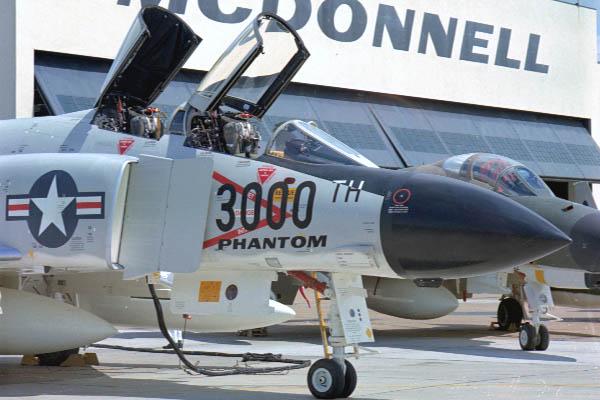September 5 in U.S. military history
Featured image: McDonnell Douglas delivers its 3,000th F-4 Phantom on this date in 1968.
1781: The Royal Navy fleet commanded by Rear Admiral Sir Thomas Grave’s Royal fleet clashes with Comte de Grasse’s French armada at the entrance to the Chesapeake Bay. The navies fight each other at close range for two hours before the British disengage and sail for New York. The French victory traps Lt. Gen. Lord Corwallis’ army at Yorktown, preventing their reinforcement or evacuation and ultimately contributing to Cornwallis’ surrender in October.
1813: Off the coast of Maine, the brig USS Enterprise spots HMS Boxer and the two vessels begin maneuvering to attack. Boxer’s captain Samuel Blyth declares “We are going to fight both ends and both sides of this ship as long as the ends and the sides hold together.” Blyth is killed in the opening barrage, and in less than 30 minutes, his ship is wrecked. A mortally wounded Capt. William Burrows refuses to accept Blyth’s sword and orders it sent back to the English captain’s family. The two captains are buried side by side during an elaborate funeral in Portland.
1862: U.S. Ambassador to Great Britain, Charles F. Adams (the son of President John Quincy Adams and grandson of Pres. John Adams), informs the British government that sending ironclad warships to aid the Confederacy would lead to war.
1917: At Gouzeaucourt, France, an American engineer unit comes under enemy artillery fire, wounding Sgt. Matthew Calderwood and Pvt. William Branigan — the first U.S. casualties of World War I.
1939: As Germany fights its way across Poland, President Franklin Roosevelt issues two neutrality proclamations. While required to put in place an arms embargo by law, Roosevelt will soon ask Congress to remove the ban.
1944: While escorting a bombing mission to Stuttgart, Lt. William H. Lewis shoots down five Heinkel He-111 bombers taking off from Göppingen, Germany, becoming an ace in one mission. His flight of P-51 Mustangs would shoot down 16 bombers during the attack.
In Belgium, Pvt. 1st Class Gino J. Merli and his company are attacked by a numerically superior German force. Merli is surrounded, but covers the retreat of his fellow soldiers with his machinegun. His assistant gunner is dead and another eight soldiers from his section surrender when the Germans overtake his position. Merli plays dead, then opens fire on the Germans when they move on. They return to the machinegun position, but Merli fools them again. He stays at his post all night, and by morning had inflicted so many casualties that the Germans surrendered. 52 enemy bodies were found in Merli’s killzone, with 19 directly in front of his machinegun. Merli was awarded the Medal of Honor.
1952: When a battalion of Chinese troops attacked a Marine outpost on Korea’s “Bunker Hill,” Pvt. 1st Class Alford L. McLaughlin rained down fire on the communists from two machineguns, which he fired from the hip. When the weapons would overheat, he would switch to his carbine and grenades. Although wounded and enduring painful burns from the hot barrels, he kept up his stand and by battle’s end, accounted for some 150 dead Chinese soldiers and another 50 wounded. For his actions, McLaughlin was awarded the Medal of Honor.

Today’s post is in honor of Air Force Staff Sgt. Todd J. Lobraico Jr., who was killed on this date in 2013 by enemy small-arms fire during a patrol outside Bagram Airfield in Afghanistan. The 22-year-old native of New Fairfield, Conn. was assigned to the 105th Security Forces Squadron, Stewart Air National Guard Base (N.Y.).
